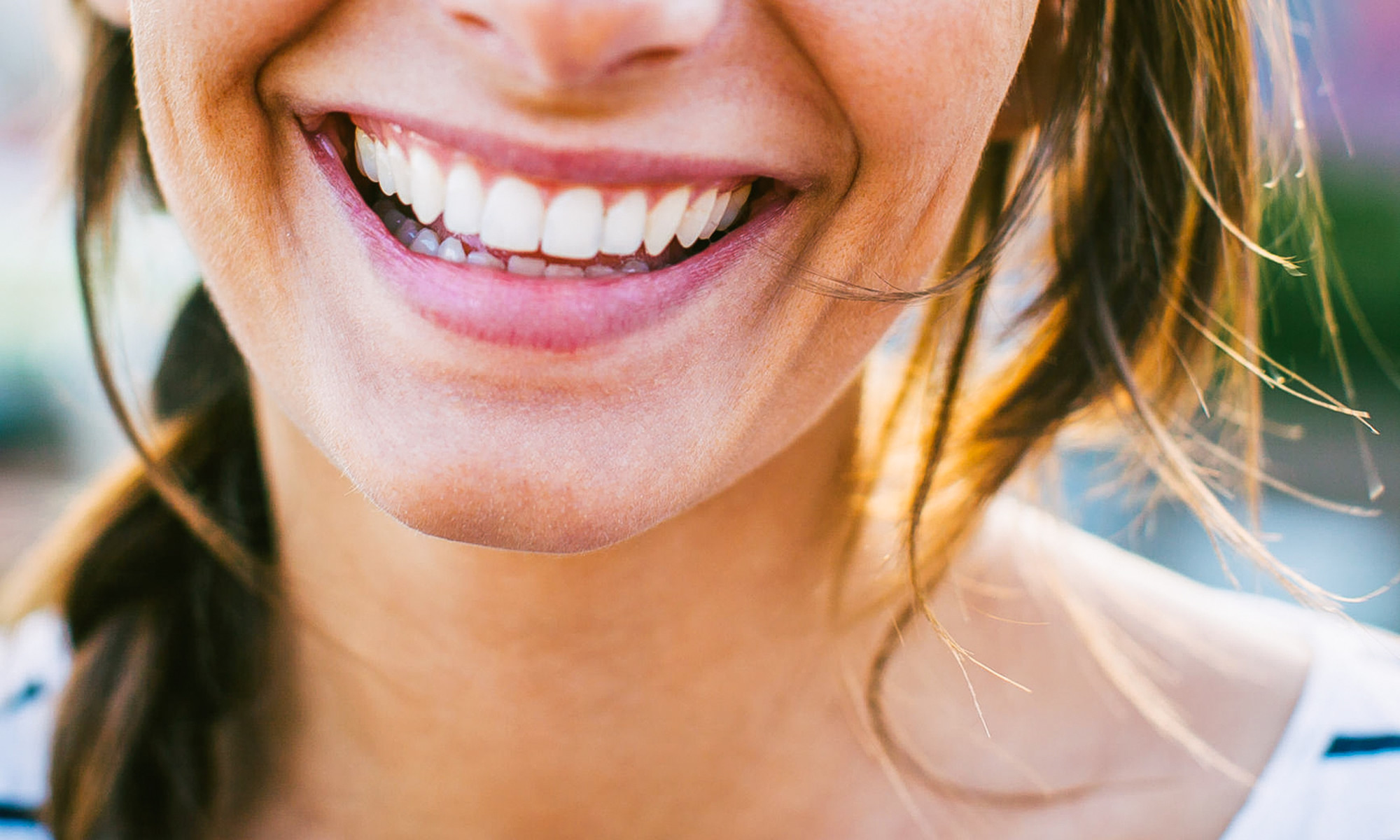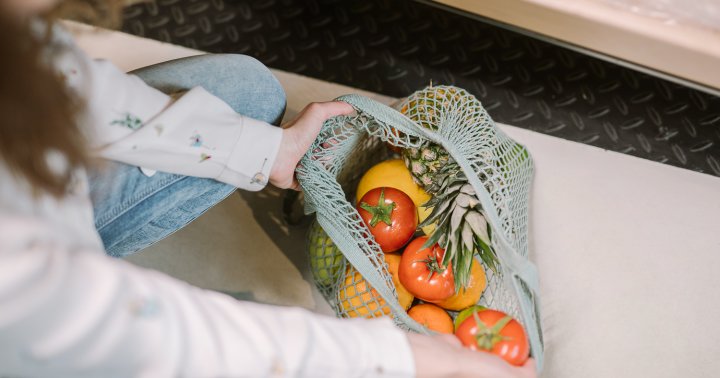How To Whiten Your Teeth At Home & What To Avoid, From Dentists
Your personal guide to navigating DIY teeth whitening.


mbg Assistant Beauty Editor
mbg Assistant Beauty Editor
Hannah Frye is the Assistant Beauty Editor at mindbodygreen. She has a B.S. in journalism and a minor in women’s, gender, and queer studies from California Polytechnic State University, San Luis Obispo. Hannah has written across lifestyle sections including health, wellness, sustainability, personal development, and more.
Image by BONNINSTUDIO / Stocksy December 21, 2022 Our editors have independently chosen the products listed on this page. If you purchase something mentioned in this article, we may Some trends created on social media are relatively harmless. Makeup and hair care are two categories that are often deemed safe, for the most part. However, in recent years, oral care has become a new category filled with DIY remedies, 10-second hacks, and even at-home acid treatments. Long story short: Oral care isn’t something to play around with. When it comes to teeth whitening, the same is true. We asked dentists to give us the 101 on teeth whitening to help you navigate this buzzy topic without damaging your teeth. Here’s what to do and what not to do, straight from experts. 
Advertisement
This ad is displayed using third party content and we do not control its accessibility features.
What causes yellow teeth & stains on teeth?
First things first, you’ll want to write down a list of possible lifestyle habits that could be discoloring your teeth. For the most part, this falls into two categories: Food and dental hygiene habits.
“Coffee, tea, red wine, sodas, and tobacco use are the most common culprits for yellowing teeth,” dentist and founder of Walden Dental David Frank, DMD tells mbg. But if you skip a basic oral care routine—including brushing, flossing, and possibly a mouthwash, there’s no way your teeth will stay perfectly white.
Other possible factors contributing to teeth discoloration include aging, genetics, and oral trauma, dentist and founder of oral care brand GLO Science Jonathan B. Levine, DMD tells mbg.
In addition, some medications can cause tooth discoloration. “Antihistamines, antipsychotics, and blood pressure medications can cause dry mouth, which can lead to tooth decay and yellowing of the teeth,” Levine says.
These factors can be harder to spot and control, so meet with your dentist if you think any of the above may apply to you. Regardless, start with the habits you can control.
Once you’ve evaluated what might be causing your teeth to yellow in the first place, do your best to either moderate or eliminate the habit if possible. If you’re concerned about coffee (this one’s arguably the most common), consider opting for a reusable straw to ensure the coffee doesn’t touch your front teeth, or carry a travel-friendly toothbrush with you for a quick cleaning post-coffee.
How to naturally whiten teeth.
If you want to skip risky at-home treatments and remedies, opt for one of the following methods.
Advertisement
This ad is displayed using third party content and we do not control its accessibility features.
Try oil pulling.
Oil pulling is the act of swishing around coconut oil in the mouth to remove bacteria. This practice has been around for centuries, originating in India.
While oil pulling hasn’t been studied in terms of teeth whitening treatment, anecdotal evidence does support the possibility. Plus, the overarching benefits for your oral health are worth adding the practice to your routine.
“Oil pulling may be beneficial for reducing the volume of bacteria in the mouth and thus improving gum health and preventing oral health issues like decay, bad breath, and gum disease,” Levine explains.
While bacteria may not be all bad all the time, studies show they can lead to the yellowing of the teeth1 when out of balance.
More specifically, a bacteria called Streptococcus mutants has been known to cause plaque and gingivitis. Luckily, swishing coconut oil in your mouth daily was shown to reduce this bacteria1, research shows.
So if your tooth discoloration is caused by a buildup of bacteria, then oil pulling might be a good option to try. Regardless, it’s one low-lift (and affordable) oral care habit to add to your routine.
Advertisement
This ad is displayed using third party content and we do not control its accessibility features.
Use formulas with hydrogen peroxide.
“People should look for ingredients like hydrogen peroxide in their whitening products because it is proven to be safe and effective for teeth whitening,” Frank says. This ingredient whitens the teeth by oxidizing and bleaching just the outer layer of the enamel, he explains.
Plus, hydrogen peroxide toothpaste has been studied, with promising results. In this study, toothpaste with a higher concentration of hydrogen peroxide was deemed more effective for whitening teeth2 than the less potent paste.
However, you’ll want to be sure to avoid anything stronger than 3% hydrogen peroxide, as more intense concentrations can result in tissue damage around the gums3, research shows.
What’s more, don’t use hydrogen peroxide whitening treatments too often. “It is generally recommended to use hydrogen peroxide for teeth whitening no more than once or twice per week and get a consultation from your oral health professionals,” Levine says.
Make a DIY baking soda paste.
“Baking soda is a mild abrasive that can help to remove surface stains on the teeth and brighten their appearance,” Levine says. “It can also help to neutralize acids in the mouth that can cause tooth discoloration and raise the pH of the mouth which helps with a healthier bacterial balance and a healthier microbiome,” he adds.
To use baking soda on the teeth, mix a small amount—no more than a tablespoon—with a bit of water in a small bowl to create a paste. Then, brush your teeth with the DIY paste. Or, you can look for toothpaste with baking soda in the formula.
The effectiveness of this method depends on how severe tooth stains and discoloration are. Some people may see results after just a few uses, while others might need to keep this practice in rotation for a bit longer.
Advertisement
This ad is displayed using third party content and we do not control its accessibility features.
Consider professional treatments.
If you’ve tried DIY methods again and again with little to no success, it’s worth investing in an at-home whitening kit if you can. Many kits, like the Glo Brilliant Advanced White Smile Device Kit developed by Levine, have gone through clinical studies and demonstrated significant results—something that’s harder to achieve with DIY methods.
You can even opt for low-lift whitening pens that make teeth whitening as speedy as can be—here’s 6 of the best options on the market, all backed by dentists.
If you have access to a dentist, meeting with them for a consultation for in-office treatments is also one option that’s worth an investment. At the consultation, your dentist can develop a game plan specifically designed to whiten your teeth and address any sensitivities.
Methods to avoid:
There are a few natural methods floating around the internet that aren’t going to whiten your teeth. In fact, some of these methods may do more harm than good, so let’s go over what not to do.
Advertisement
This ad is displayed using third party content and we do not control its accessibility features.
Acidic formulas.
One popular method is using acidic substances like lemon juice and apple cider vinegar—but neither of the two is dentist-approved. “Recent studies have shown that ACV can cause more harm than good as these substances are highly acidic much like soft drinks and fruit juices, which means it can directly cause breakdown of the enamel,” Levine explains.
“The enamel layer protects the tooth and is the hardest substance in the human body and can be broken down with acids,” he adds. So any sort of fruit juice or acidic rinse is a no-go—period. To manage bacteria in the mouth, opt for oil pulling instead.
Manual exfoliation.
Do your best to skip manual teeth scraping as well. “At-home scalers will lead to potential damage to the enamel and soft tissue,” dental hygienist Rebeca Rosario, director of operations at Wally Health (a New York City–based modern dental studio previously told mbg.
If you're tempted to scrape your teeth because you feel plaque buildup, visit your dentist for proper teeth cleaning with professional-grade tools.
How to prevent yellow teeth.
Once you’ve chosen your whitening method, it’s essential to keep up your maintenance to prevent further staining. Keep the following in mind:
FAQ
How can you whiten your teeth with lemon juice?
Short answer—you can’t. Both lemon juice and apple cider vinegar are not going to whiten the teeth and may cause more harm than good. “These substances are highly acidic much like soft drinks and fruit juices, which means it can directly cause breakdown of the enamel,” Levine says.
How can you whiten your teeth overnight?
Teeth whitening does not happen instantaneously. If you want quick results, Levine recommends opting for a combination of hydrogen peroxide and a formulated peroxide adhesive, as is found in many professional-grade treatments.
How can you whiten your teeth with baking soda?
To use baking soda on the teeth, mix a small amount—no more than a tablespoon—with a bit of water in a small bowl to create a paste. Then, brush your teeth with the DIY paste. Or, you can look for toothpaste with baking soda in the formula, Levine says.

 Koichiko
Koichiko 
































